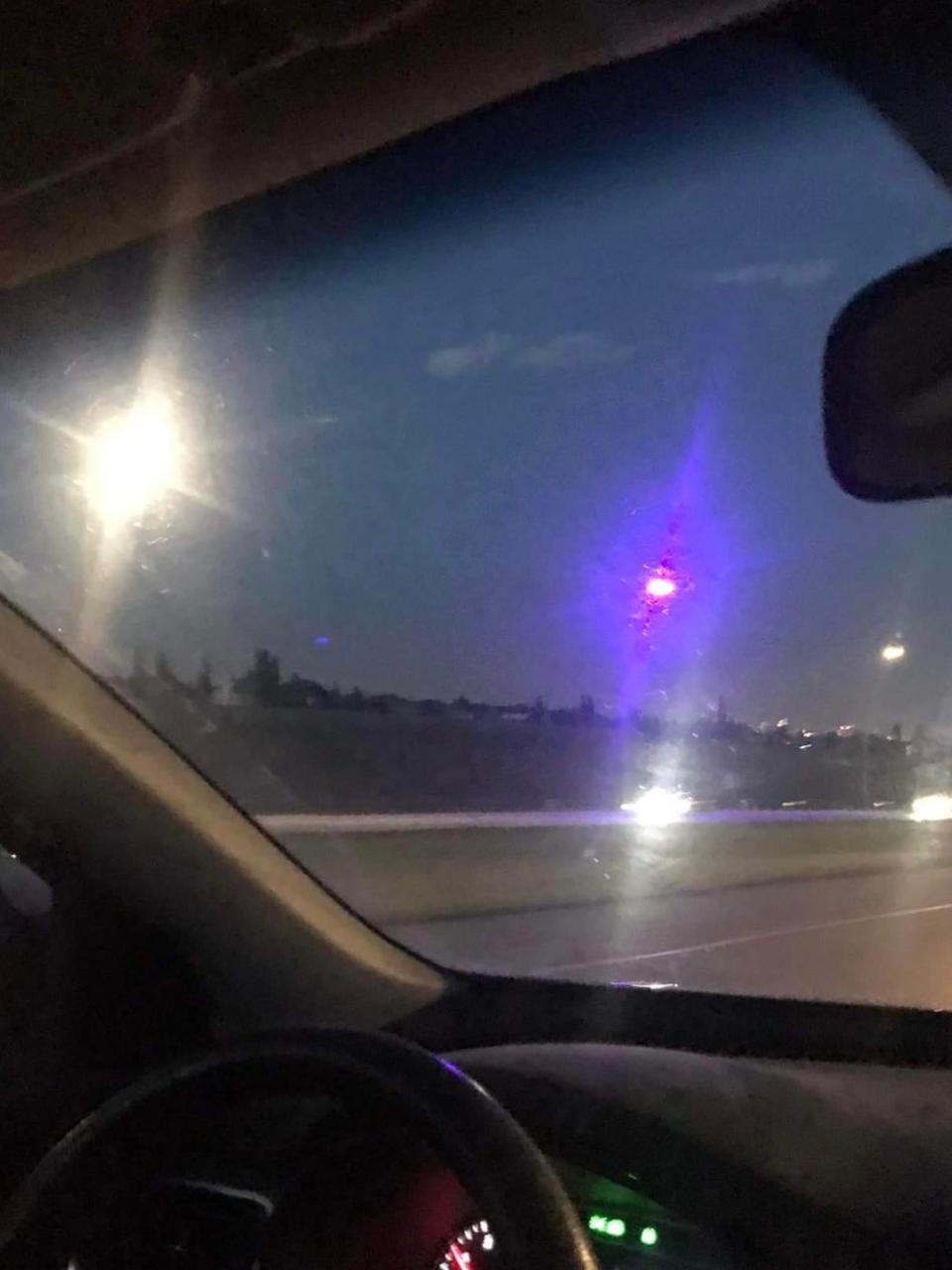Why dozens of street lights on 2 major Calgary roads are turning blue (or purple)

Some say they're blue. For others, they're purple.
Either way, dozens of coloured lights are illuminating parts of Stoney Trail and Deerfoot Trail — leaving many Calgarians wondering why.
The province has confirmed to CBC News that, contrary to many theories, the lights aren't intentionally blue.
In fact, it's the result of a manufacturing defect affecting one to two per cent of LED bulbs installed seven years ago, said the province.
According to Alberta Transportation and Economic Corridors, 70 of 7,000 street lights along those two provincially-maintained routes have turned blue (or purple).
"The issue of LED lights turning blue appears to be the premature delaminating of the phosphor coating on the light," said a provincial spokesperson.
"Lights are being replaced as they burn out, but at this time there are no plans to replace the blue lights."
The department spokesperson said it's possible more lights will turn blue over time, though it doesn't know how many.
Meanwhile, some Calgarians say they're worried about potential safety implications if people are driving through dimmer lights at night.
A growing phenomenon
The blue glow has been seen in many cities across the globe.
Governments in Vancouver, Winnipeg and Kitchener worked to actively replace the defective bulbs. They've also become an issue in cities all over the United States, and even as far as Europe.
Kartikeya Murari is an associate professor of electrical and biomedical engineering at the University of Calgary.

More coloured street lights on Stoney Trail, in northwest Calgary. (Submitted by Tracy Walters)
He said white LED bulbs naturally emit a strong blue or purple light — but that hue is absorbed by a phosphor coating, and then transmitted as a range of green-red wavelengths, which allows humans to interpret the light as white instead.
"In these LEDs, what's happening is that the phosphor is coming off and as a result, you're starting to see those blue or purple kind of wavelengths more," said Murari.
As for why the phosphor coating is delaminating early, Murari said it's hard to know without examining the bulbs in a lab. But he said he suspects heat plays a role — especially in Calgary, where temperatures fluctuate significantly.
"This temperature cycling can start to crack this phosphor material."
Murari said there are still many unanswered questions about how the lights affect visibility, or even health, but he does know one thing: "We don't see quite well in blue light, and that can be a concern."
A spokesperson for the City of Calgary said it doesn't have any inventory with this defect.
Calls for a safety study
While some Calgarians may not mind the moody ambiance while they drive down the freeway at night, Lori Allan said she's concerned about safety.
She first started noticing the blue glow along the ring road about a year ago, and she said she's been spotting them more frequently since.
Allan, who's had five grand mal seizures since 2017, said the lights trigger her epilepsy.
"I like to close my eyes while we go through the blue lights because I'm afraid that it's going to give me a seizure," said Allan.
She doesn't drive, but she worries about visibility issues for others.
"They need to do a proper study on whether or not these are actually safe or not, because I actually think they're more of a hazard," she said. "It makes it really hard to even see the road."
As for Murari, he says it would be helpful for the province to study how well drivers can see under blue light, and what wavelengths the blue bulbs emit — especially if Calgarians might see more of them pop up across the city.
"Those could be helpful in sort of allaying fears about this."
The province said it isn't aware of any safety concerns, and it will continue to monitor the situation in North America and overseas.


